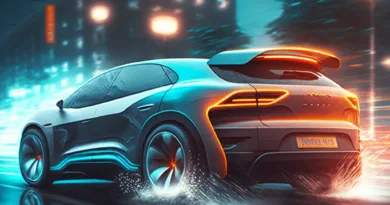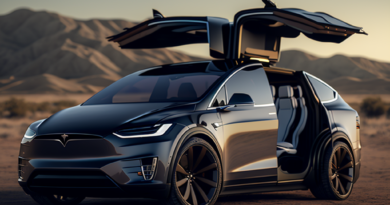A Brief History of Electric Vehicle Technology

What is an Electric vehicle?
Electric vehicles (EVs) are vehicles that are powered by electricity, typically using a battery pack to store the electricity and an electric motor to convert it into motion. The first EVs were developed in the early 19th century, but it was not until the 21st century that they began to gain widespread attention and adoption. The history of EVs is a fascinating one, with many ups and downs as the technology has developed and competed with traditional internal combustion engines. In this article, we will take a brief look at the history of electric vehicle technology and the factors that have influenced its development.
Early Development of Electric Vehicle Technology
The first electric vehicles can be traced back to the early 19th century, when a number of inventors and engineers began experimenting with using electricity as a means of propulsion. One of the earliest examples of an electric vehicle was developed by Hungarian engineer Ányos Jedlik in 1828, who created a small model car powered by a simple electric motor.
Over the next few decades, several other inventors and engineers developed their own electric vehicles, including Thomas Davenport in the United States and Robert Anderson in Scotland. These early EVs were limited in their capabilities, with low power and short driving ranges, but they paved the way for the development of more advanced electric vehicles in the future.
One of the major challenges facing the early developers of electric vehicles was the limited availability of suitable batteries. The first batteries used in EVs were large and heavy, making them impractical for use in vehicles. However, as battery technology improved and became more advanced, it became possible to build smaller and more powerful batteries that could be used in electric vehicles. This paved the way for the development of more advanced electric vehicles in the late 19th and early 20th centuries.
Rise of the Internal Combustion Engine
Despite the early promise of electric vehicle technology, it was the internal combustion engine that came to dominate the automotive industry in the late 19th and early 20th centuries. Gasoline-powered vehicles, fueled by the plentiful and relatively cheap oil reserves that were being discovered around the world, became the dominant form of transportation.
There were several reasons for the rise of internal combustion engines over electric vehicles. One of the main reasons was the greater driving range and power that gasoline-powered vehicles offered. Gasoline engines were also simpler and cheaper to manufacture than electric motors, which made them more attractive to both consumers and automakers. Finally, the development of a widespread network of gas stations made it easy for drivers to refuel their vehicles, while the limited availability of charging infrastructure made it difficult for electric vehicle owners to keep their vehicles charged.
All of these factors contributed to the dominance of gasoline-powered vehicles and the relative decline of electric vehicles in the early 20th century.
Renewed Interest in Electric Vehicle Technology
In the latter part of the 20th century, concerns about oil dependence and climate change led to a renewed interest in electric vehicle technology. As the dangers of relying on fossil fuels became increasingly apparent, governments and consumers alike began to look for alternatives to gasoline-powered vehicles. At the same time, advances in battery technology made it possible to build more powerful and efficient electric vehicles that could compete with gasoline-powered vehicles in terms of driving range and performance.
In an effort to encourage the adoption of electric vehicles, many governments around the world began to offer incentives for consumers to purchase EVs. These incentives often took the form of tax credits, subsidies, or other financial incentives that made it more affordable for consumers to purchase electric vehicles. Governments also invested in the development of charging infrastructure, making it easier for EV owners to charge their vehicles while on the road.
All of these factors contributed to the growing popularity of electric vehicles in the late 20th and early 21st centuries. As the technology continues to advance and the challenges facing electric vehicles are addressed, it is likely that we will see even greater adoption of electric vehicle technology in the future.
Advantages of Electric Vehicles
There are many advantages to electric vehicles that make them an attractive alternative to gasoline-powered vehicles. One of the biggest advantages is their lower operating costs. Because electric vehicles do not rely on gasoline to power their engines, they are much cheaper to operate than gasoline-powered vehicles. This is particularly true when the cost of electricity is low, which is often the case at night or on weekends.
Another advantage of electric vehicles is their reduced emissions. Electric vehicles do not produce any tailpipe emissions, making them much cleaner and more environmentally friendly than gasoline-powered vehicles. This is a major selling point for consumers who are concerned about the impact of transportation on the environment.
Finally, electric vehicles offer increased energy independence. Because they do not rely on fossil fuels, electric vehicles can help reduce a country’s dependence on oil imports. This is particularly important for countries that are heavily reliant on foreign oil, as it can help reduce their vulnerability to supply disruptions and price fluctuations.
Overall, the advantages of electric vehicles make them a compelling alternative to gasoline-powered vehicles, and it is likely that we will see even greater adoption of electric vehicle technology in the coming years.
Challenges to Widespread Adoption of Electric Vehicles
Despite the many advantages of electric vehicles, there are still several challenges facing widespread adoption of this technology. One of the biggest challenges is the high upfront costs of electric vehicles. While the operating costs of electric vehicles are often lower than those of gasoline-powered vehicles, the initial purchase price of EVs is often much higher. This can be a major barrier to adoption, particularly for consumers who are on a tight budget.
Another challenge facing electric vehicles is their limited driving range. While the driving range of electric vehicles has improved significantly in recent years, it is still lower than that of gasoline-powered vehicles. This can be a major concern for drivers who need to drive long distances or who do not have access to charging infrastructure.
Finally, the limited availability of charging infrastructure is a major challenge facing electric vehicles. While the number of charging stations has increased in recent years, they are still not as widespread as gas stations, which can make it difficult for electric vehicle owners to keep their vehicles charged while on the road.
Overall, while the challenges facing electric vehicles are significant, it is likely that they will be overcome as the technology continues to advance and the demand for cleaner and more efficient forms of transportation grows.

Conclusion
Electric vehicles have come a long way since their early development in the 19th century, and today they offer a compelling alternative to gasoline-powered vehicles. With lower operating costs, reduced emissions, and increased energy independence, the benefits of electric vehicle technology are hard to ignore.
However, there are still significant challenges facing widespread adoption of electric vehicles, including high upfront costs, limited driving range, and limited availability of charging infrastructure. These challenges will need to be addressed if electric vehicles are to play a major role in the future of transportation.
Despite these challenges, it is clear that electric vehicles have the potential to play a major role in the future of transportation. As the technology continues to advance and the demand for cleaner and more efficient forms of transportation grows, it is likely that we will see even greater adoption of electric vehicle technology in the coming years. So, the future looks bright for electric vehicles, and it will be interesting to see how they continue to evolve and shape the way we get around.





Sure, please share it with your friends. Thanks!
Thank you!